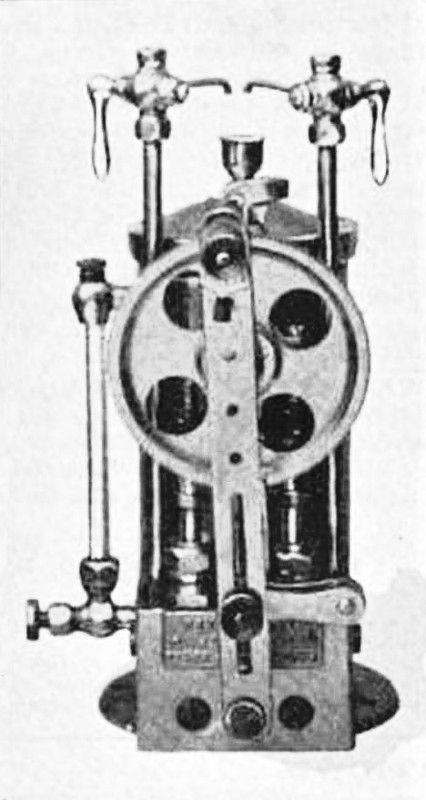|
Title: |
1898 Article-Rochester Automatic Lubricator Co., Rochester Automatic Lubricator |
|
Source: |
The Railway Age, V25, 20 May 1898, pg. 357 |
|
Insert Date: |
12/14/2018 11:48:56 AM |
The Rochester Automatic Lubricator.
A number of practical trials recently made with the Rochester automatic lubricator have shown some very interesting results both in the matter of oil-saving and in the efficiency of the lubrication as shown by an economy in fuel consumption. Upon the latter point we have been furnished with a detailed statement covering two months' service of the engines used in connection with the lighting plant of the American Tract Society building, New York, in which figures are given showing the number of pounds of coal used, the number of amperes generated, and the pounds of coal used per ampere. For the five weeks ending February 27, the engines were lubricated by an ordinary sight feed cup and for the five weeks ending April 3 the Rochester lubricator was used. The amount of coal saved during the five weeks by the use of the lubricator in question is shown by the figures to be 41,200 pounds, or 1.64 pounds per ampere generated. The amount of coal used varied during the ten weeks from 117,000 pounds, the maximum, to 92,700 pounds, the minimum.
The form of the lubricator as used for locomotives is shown in the accompanying illustration. The principal features consist in its positive action, the fact that the quantity of oil fed is under the complete control of the engineer, being capable of regulation to feed any quantity of oil required, and that the feed stops when the engine stops. They are made in a variety of styles and sizes for single, double, triple and quadruple feed and in capacities varying from one pint to two gallons. The extent to which the lubricators are in use is shown in a recent catalogue of the manufacturers in which upwards of 300 names of important concerns are given as users of the device.
The accompanying letter from the master mechanic of a well-known railroad is self-explanatory and conveys an idea of the manner in which the claims of the manufacturers are borne out in actual service:
The Rochester lubricator has been in constant service except while the engine has been in the shop for repairs. During the time the lubricator has been in service it has given the best of satisfaction. There has been no trouble whatever, and so positive is it with the regular quantity of feed that the mileage of the engine (within a few miles) can be computed from the quantity of. oil used. Previous to its use on this engine when using the sight feed lubricator, the valves, after three- or four-months’ service, would commence to blow badly, but with the Rochester lubricator, the valves and cylinders were in good shape when the engine went into the shop after about one year's service. Have not as yet attempted to restrict in the quantity of oil used. This particular engine is running 46 to 48 miles to the pint. There is no question in my mind that less oil with better results can be had with the Rochester lubricator than with the sight feed lubricator. We had at first a little trouble owing to the cup siphoning the oil, but this was soon overcome by inserting between chest and lubricator a spring check. To attach and operate the lubricator is very simple, as it needs but little power. Our present application is for a culm-burner, with cab over center of boiler. The lubricator is placed on a bracket at side of the boiler in the cab, thence to the blade of the eccentric rod with a 3/8” rod and a bell-crank, thence to the lubricator. No guide or other expensive rigging is required. It can be connected to either side of the eccentric blades with a little longer rod in case of accident, or it can be connected to either pair of driver axles using a long or short rocker-arm running along the running board to the location required. This engine is run 200 miles each trip, pulling ten to twelve loaded milk cars, making fast time and has made 64,864 miles with the lubricator with condition of cylinder and valves as above stated.
In the lubricators as now constructed a special vacuum check is placed at the entrance to the steam chest and precludes the possibility of siphoning the oil out of the tallow pipes. The oil is said to be delivered to the valves within 45 seconds after starting the engine and will feed against any pressure up to 1,500 pounds.
The device is manufactured by the Rochester Automatic Lubricator Company, Rochester, New York. |
|
 1898 Rochester Automatic Lubricator Co., Rochester Automatic Lubricator
1898 Rochester Automatic Lubricator Co., Rochester Automatic Lubricator
|
|